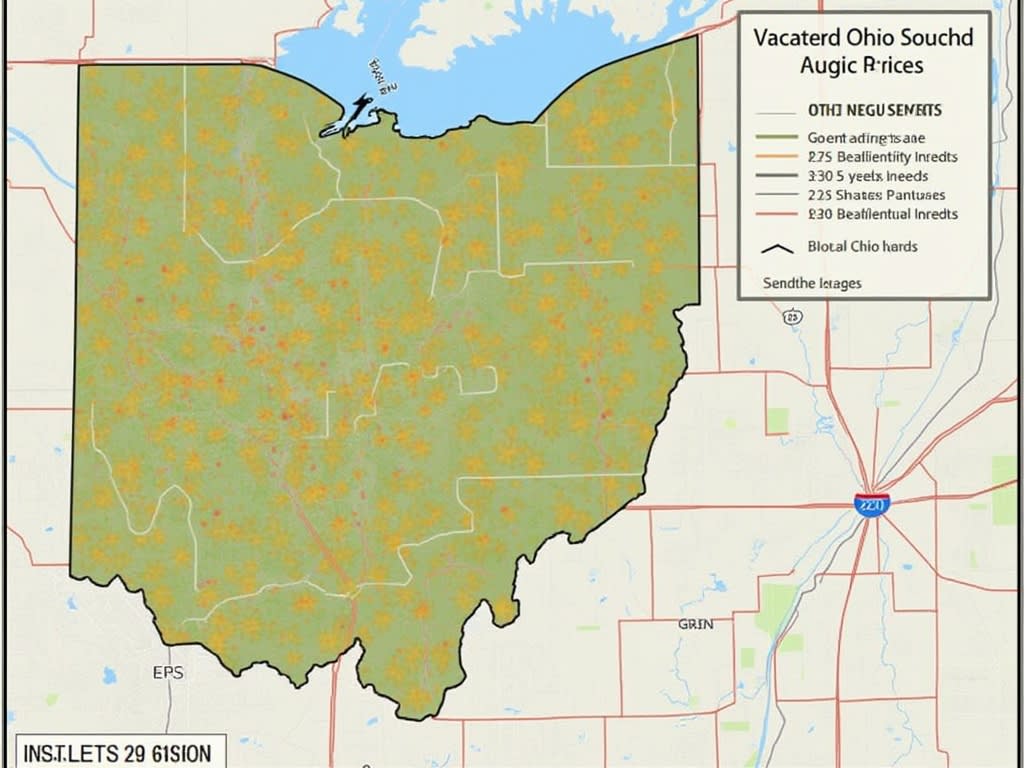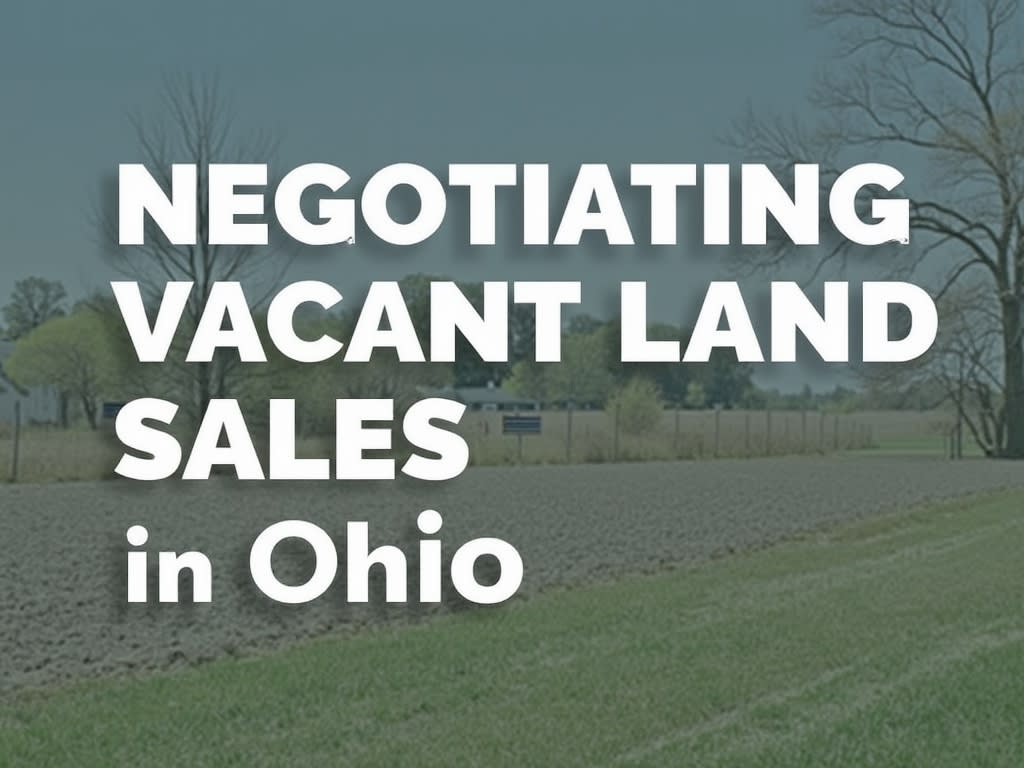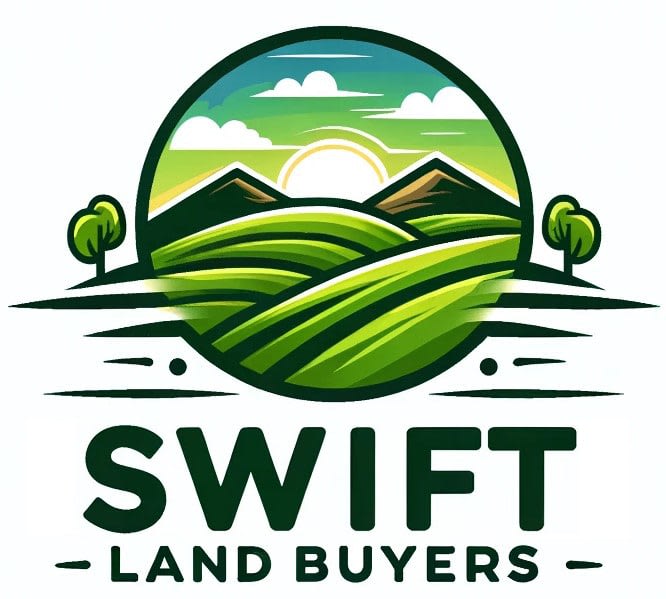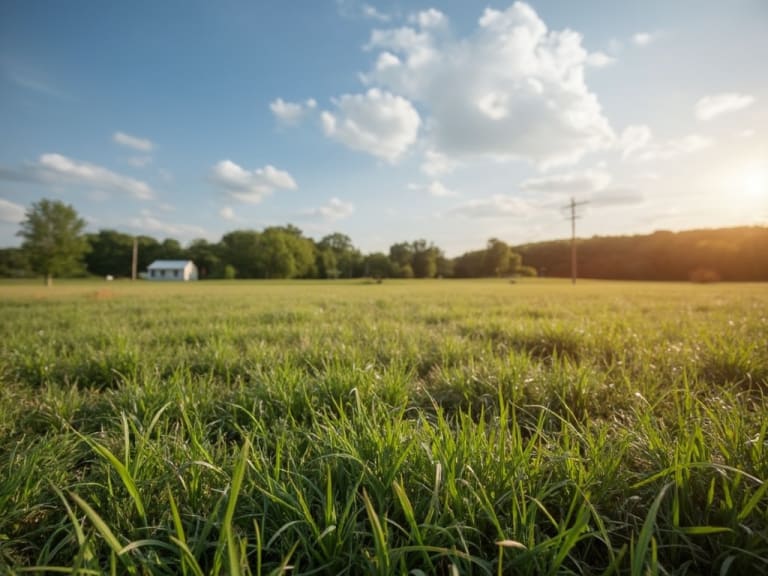A solid land sale in Ohio hinges on strategic pricing and market insights, as vacant land values increased 12.3% from 2022 to 2023. Local market conditions, proper documentation of property rights, and working with property specialists in Ohio directly influence your sale’s outcome.
Key Takeaways
- Setting the right price from the start matters – properties with inflated prices typically remain on the market for 180 days or more
- Partnering with a land expert who grasps soil conditions, zoning laws, and potential uses delivers better results than residential agents
- Documenting access rights, easements, and property features clearly helps attract serious buyers
- Being open to different deal structures and terms speeds up sales while protecting property value
- Quality marketing assets, including drone photos and comprehensive property details, effectively highlight the land’s strengths
Why Pricing and Market Knowledge Matter Most When Selling Ohio Land
Current Market Trends and Pricing Strategy
I’ve seen firsthand how proper pricing makes or breaks a land sale in Ohio. The market’s showing strong growth, with vacant land prices rising 12.3% between 2022 and 2023. Farmland values have also jumped 8.4%, reaching $7,100 per acre in 2023.
Setting the right price requires several key considerations:
- Recent comparable sales in your specific county or region
- Current buyer demand in your local market
- Property features like soil quality, road access, and utilities
- Zoning restrictions and potential use cases
- Seasonal timing of your sale
Overpricing remains the biggest mistake I see sellers make. Properties priced above market value sit unsold for an average of 180 days, while accurately priced land typically moves much faster. This extended time on market often leads to price reductions that could have been avoided with proper initial pricing.
Local market knowledge directly impacts your success. Each Ohio county has unique factors affecting land values – from development potential near growing cities to agricultural productivity in rural areas. I recommend getting multiple professional opinions on value and studying recent sales data before selling vacant land by owner. Your goal should be attracting serious buyers quickly while maximizing your return through strategic, market-based pricing.

Choose the Right Agent and Create Compelling Marketing Materials
Land Specialist vs Traditional Real Estate Agent
Partnering with a land specialist rather than a residential real estate agent can significantly boost your chances of a successful sale. Land specialists understand specific factors like soil quality, zoning regulations, and land use potential that typical residential agents might miss.
Here are key marketing elements your land specialist should implement:
- Professional photography that captures aerial views, natural features, and access points
- Detailed property descriptions highlighting unique selling points like timber value, mineral rights, or development potential
- Accurate boundary maps and survey documentation
- Strategic listing placement on land-focused platforms and websites
- Custom marketing plans targeting specific buyer demographics
High-quality photos make a striking difference in attracting qualified buyers. I recommend investing in professional photography services specializing in land properties. They’ll capture essential elements like topography changes, water features, and road frontage that casual photos often miss.
Your property description needs precise details about acreage, utilities, road access, and current land use. Being upfront with this information builds trust with potential buyers and reduces time wasted on unsuitable inquiries. A land specialist can help identify and emphasize the most valuable aspects of your property in the listing description while ensuring all claims are accurate and verifiable.
Remember – the right agent combined with strong marketing materials can mean the difference between a quick sale at full price versus a property that sits unsold for months.
Showcase Your Property’s Best Features and Access Rights
Emphasizing Natural Features and Amenities
I recommend focusing on the distinctive elements that make your land stand out in the Ohio market. Natural attributes create immediate appeal for potential buyers. Your property’s value increases significantly with features like:
- River frontage or water access points
- Established woodland areas with mature trees
- Areas suitable for hunting or recreational activities
- Natural clearings perfect for building sites
- Existing trails or pathways
Access Rights and Legal Considerations
Property access can make or break a land sale. Clear documentation of rights-of-way proves essential for securing buyer interest. Before listing, verify all recorded easements and access agreements through your county recorder’s office. Split estate structures, common in Ohio, require special attention – I strongly suggest clarifying which subsurface rights transfer with the sale.
Your property’s access rights must be properly documented through:
- Deeded access agreements
- Public road frontage details
- Private road maintenance agreements
- Utility easements and right-of-ways
- Mineral and timber rights documentation
These elements shape your property’s marketability and final sale price. Buyers need assurance they can fully use and enjoy their investment. By highlighting both natural features and confirmed access rights, you’ll position your land competitively in the Ohio market.

Be Flexible with Terms and Negotiations
Creating Win-Win Solutions
Price flexibility stands as a critical factor in land sales across Ohio. I’ve found that sellers who maintain rigid pricing often watch their properties sit idle while more adaptable sellers close deals faster. Setting a firm price without room for negotiation can push away qualified buyers who might otherwise make strong offers.
Smart negotiation extends beyond just the sale price. Here are key areas where flexibility can speed up your sale:
- Adjustable closing dates to match buyer financing timelines
- Lease-back arrangements letting you stay on the property post-sale
- Creative financing options like seller financing or split payments
- Contingency periods that give buyers time for due diligence
- Price adjustments based on property inspection findings
Flexibility in these areas doesn’t mean accepting unfavorable terms. Instead, it creates opportunities to structure deals that benefit both parties. For example, offering a lease-back option might attract buyers who aren’t in a rush to occupy the property, while giving you extra time to relocate. Similarly, being open to different closing dates can help buyers who need to align their purchase with other financial commitments.
The key lies in understanding which terms you can adjust without compromising your essential needs. By remaining adaptable in negotiations, you’ll expand your pool of potential buyers and increase your chances of a successful sale.

Legal Considerations and Property Rights
Property Rights Verification
Land sales in Ohio require specific legal expertise to protect your interests. I recommend hiring a real estate attorney who specializes in land transactions before listing your property. The Ohio Bar Association reports that property disputes often arise from incomplete rights verification.
Essential Legal Documentation
Before selling your land, these key elements need verification:
- Surface rights ownership status and any existing liens
- Mineral rights ownership and transfer conditions
- Water rights and usage restrictions
- Current easements affecting property access
- Boundary line agreements with adjacent properties
- Zoning restrictions and local ordinances
A thorough title search can reveal potential issues with these rights. Getting proper documentation for land sales early helps avoid costly legal battles later. Make sure all agreements, restrictions, and rights transfers are clearly stated in your sale contract.

Avoid Common Pricing and Negotiation Mistakes
Setting the Right Price from the Start
Overpricing your land can backfire by extending its time on the market. I’ve seen properties sit unsold for months because sellers set emotional rather than market-based prices. The first 30 days are critical – this period typically brings the most interested buyers and best offers.
Here are the key pricing and negotiation strategies I recommend:
- Price within 5-10% of comparable land sales to attract serious buyers
- Adjust your price every 30-45 days if you’re not getting offers
- Remove emotional attachments when considering market value
- Stay flexible during negotiations – rigid pricing can chase away qualified buyers
- Consider current market conditions and seasonal factors in your pricing
- Review recent sales data monthly to ensure your price stays competitive
- Keep detailed records of all offers to spot pricing trends
Your land’s true value lies in what buyers will pay, not what you think it’s worth. I encourage sellers to research comparable sales and get professional appraisals before setting their price. Being open to reasonable offers and maintaining room for negotiation helps secure better deals faster. Regular price evaluations and adjustments based on market feedback keep your property competitive and attractive to buyers.


